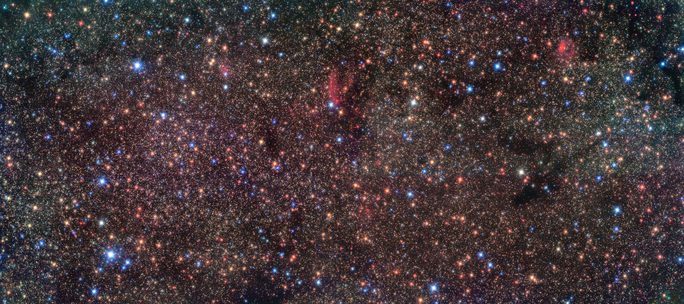Astronomers have recently identified an unusual area known as Sagittarius B1 near the center of the Milky Way galaxy, where a multitude of young stars with solar mass are being born in abundance.
According to Dr. Francisco Nogueras-Lara from the Max Planck Institute for Astronomy in Germany, the region near the center is the most extreme environment in our galaxy. However, they have discovered a “star nursery” beyond imagination in what was thought to be a dead zone.
Sagittarius B1, abbreviated as Sgr B1, is one of the areas within the “dead zone” near the center of the Milky Way, which has a core consisting of a monstrous black hole named Sagittarius A*.

The area known as Sagittarius B1 in the Milky Way galaxy – (Photo: ESO)
Sgr B1 has long been known for its strong emissions when observed through telescopes. This time, using a state-of-the-art infrared observation device called HAWK-I on the Very Large Telescope of the European Southern Observatory (ESO), scientists found shocking evidence of approximately 100,000 stars that are only 10 million years old or younger.
In astronomical terms, 10 million years is relatively young. Notably, these 100,000 stars have masses comparable to our Sun.
This impressive number of stars is distributed across 8 distinct, extremely hot sub-regions.
Additionally, researchers identified 6 other massive and solitary stars, whose presence is believed to interact strongly with the aforementioned 8 star clusters.
This discovery indicates that the center of the galaxy is actually much more bustling and vibrant than previously thought, despite being an extreme environment. Even if one of the 100,000 solar analogs were to produce an Earth-like planet, the chances of life arising would still be slim.
The study was recently published in the scientific journal Nature Astronomy.


















































